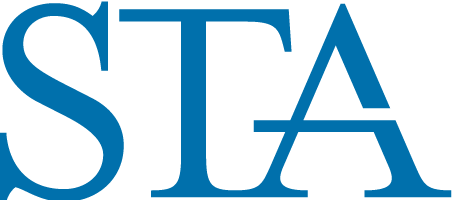testing this out testing this out testing this out testing this out testing this out testing this out testing this out testing this out testing this out testing this out testing this out testing this out testing this out testing this out testing this out testing this out testing this out testing this out testing this out testing this out testing this out testing this out testing this out testing this out testing this out testing this out
Who We Are The Security Traders Association, “STA” 1 is comprised of 24 affiliate organizations covering the US and Canada. The STA national board of governors is comprised of past presidents and industry specific leaders. Our membership represents INDIVIDUALS from varying business models – buy-side, sell-side, hedge funds, exchange traders and market makers- dealing in equity and derivative trading.
Issues
- SEC Transaction Fee Pilot for NMS Securities
- Order Protection Rule
- FINRA Regulatory Notice 18-26; Continuing Education Program
- Listed Options Working Group, “LOMSWG”
- Thinly Traded Securities – UTP
Specific Comments
SEC Transaction Fee Pilot for NMS Securities
- *STA believes that the impact access fees have on our market structure has evolved since they were originally allowed and then capped. We therefore support a study that includes a pilot.
Order Protection Rule
- *In 2008 STA wrote “STA is of the opinion that a marketplace without this order protection rule will be superior to enforcing the current OPR. While this opinion would appear “anti-investor”, it is not. While the OPR was well intended, its many complex exemptions complicate compliance and dilute its effectiveness.”
- *As STA reviews its existing opinion, we will take into consideration OPR’s impact on solutions which seek to improve the trading of Thinly Traded securities and its need in the trading of liquid securities.
FINRA Regulatory Notice 18-26; Continuing Education Program Maintaining Qualification Status Post-Termination
- *STA believes that FINRA has taken meaningful steps to address what we view as two (2) unreasonable barriers to re-enter the financial services industry exists for individuals with a prolonged absence. Specifically, effective October 8, 2018, FINRA instituted the Securities Industry Essential (“SIE”) Exam. STA believes that the next contributing factor which needs to be addressed is continuing education requirements for individuals away from the industry for a prolonged period of time.
Listed Options Working Group, “LOMSWG”
- *LOMSWG was formed to address issues regarding the current state of the U.S. options market structure. Formed in Q3’2018, LOMSWG is comprised of representatives from the options Exchange parent organizations; Options Clearing Corporation and the Options Committees of SIFMA and STA.
- *Since exchanges must ensure that any collective activity on their part conforms to applicable laws, in particular— because the exchanges are competitors—participation by SEC staff is provided.
- *Among the issues which LOMSWG is currently addressing include: Smarter Strikes ; Exchange Give Ups and Obvious Error RFP Process.
Thinly Traded Securities – UTP
- *While STA understands and appreciates that the goal of suspending UTP is to enable “innovative market structure solutions”, we have concerns regarding an exchange regime which allows for the suspension of UTP as part of its construct.
- *As the Commission conducts analysis on UTP suspension filings, it should take into consideration impacts to operational capability and the conditions which encourage enhanced liquidity provision.
- *Fostering greater operational capability should be the foremost consideration of any regulatory or legislative entity that has oversight or influence on our financial markets. The Commission should consider if one market structure serves operational capability better than another for different types of securities. General areas for consideration could include limiting single points of failure.
- *Enhanced liquidity is liquidity that exceeds what is publicly displayed and available in the marketplace. A contributing factor in the amount of overall liquidity available is the capital commitment which comes from a subsector of trading centers: market makers, both electronic and traditional; and block traders. Exchanges, by their regulatory requirements are not allowed to commit capital in facilitating liquidity.
- *While the factors in enhanced liquidity provision are numerous, the Commission should consider the effects of filings which seek to suspend UTP has on certain core ones including:
- • Quote quality. Displayed liquidity matters, however efforts which seek to increase its levels need to ensure that what is publicly displayed is accessible in a fair and reasonable way.
- • Volatility. Providers of enhanced liquidity are more inclined to commit capital and more able to conduct block trading if the prices of the security the provider transacts in remains reasonably stable.
- • Reduction in costs. The withdrawal of market makers and block traders is partially related to the increased costs of trading securities, in particular those of Thinly Traded securities where recouping such costs are difficult.
PDF version here
